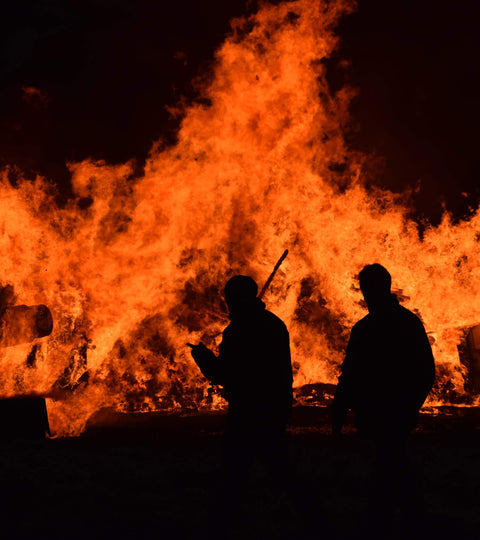The 2020 Wildfires: Wreaking Havoc in the Cannabis Space
Introduction
The West Coast is in flames. An assortment of wildfires blazing out of control are leaving unprecedented devastation across large swaths of California, Oregon, and Washington. At least 35 deaths have been reported and hundreds of thousands of individuals have had to evacuate their homes and businesses, upending countless lives in what has already been an incredibly turbulent year.

The West Wildfires and Cannabis Crops
Cannabis farms and businesses have not been spared from the destruction brought on by the wildfires. In California, several cannabis farms have already burned down. Quite a bit more are in danger of a similar fate not just in the Golden State, but also in Oregon and Washington, and mandatory evacuations have been ordered for the heartland of cannabis country: California’s Emerald Triangle region and southern Oregon.
For some farmers, Mother Nature has nullified any choice in the matter regarding the fate of their cannabis. However, for others who have so far escaped the worst of the destruction, a difficult choice remains: destroy their cannabis or attempt to salvage it? Proximity to the wildfires will play a major role in dictating which farmers will have to scrap their crops and which farmers will still be able to produce safe cannabis.
Between the wildfires themselves and the methods used to combat them, potential contaminants could potentially work their way into West Coast cannabis crops. Ash, pesticides, fire retardants, and soot all may make some cannabis unfit to consume.
How the Grow Cycle Affects Prospects for Western Cannabis
Cannabis in the seedling or vegetative stages is much better suited to survive the worst of these hazardous conditions. Outdoor farmers with cannabis crops in the seedling stage will need to ensure that toxic ash has not been introduced into their soil. Those with cannabis in the vegetative stage will need to be vigilant in examining their plants for signs that toxins have affected their crops’ root systems.
Unfortunately, the National Interagency Fire Center projects that these wildfires will continue to pose an elevated threat until December, a timespan that partially coincides with when most outdoor cannabis crops will be in the flowering stage. This is the stage of the grow cycle where cannabis has the greatest likelihood of becoming contaminated, with an extremely high potential for resinous flowers to become exposed to all manner of toxic adulterants. As a result of these lost and contaminated harvests, cannabis consumers should expect shortages of some of their favorite cultivars and products due to significant disruptions in the supply chain.

How Will The Wildfires Alter the Cannabis Landscape?
Despite the unprecedented nature of the 2020 wildfires, some experts in the cannabis space believe that the fires ought to be perceived as an ominous bellwether. David Najera, a respected Mendocino County-based cannabis consultant and farmer, opined that he expects severe annual wildfires to become “the new norm.”
What will this climate change-driven “new norm” mean for cannabis businesses in the foreseeable future?
Undoubtedly, small-scale cannabis farms and businesses will be devastated by the 2020 wildfires, with an expectation that total losses will be in the millions of dollars. Many of these operations will be able to ride out this difficult season and remain afloat. However, if wildfire seasons of this level of severity becomes common occurrences, then a large number of smaller operations will have no choice but to eventually fold. Nathan Howard, president and co-founder of East Fork Cultivars, explained that the effects of the wildfires will “continue to ripple through the industry and continue to exacerbate the worst trends around consolidation of wealth, licenses, and who’s able to participate in the market.”
Aside from the larger issue of equity during (and after) the green rush, this consolidation of power in the cannabis space is likely to negatively impact consumers. A thriving market with a plethora of different cannabis suppliers offers dispensaries and consumers choice, driving up quality. A more monopolized cannabis space leaves little incentive for cannabis farms to produce high-quality cannabis, driving down quality. Hopefully, this likelihood does not come to pass.
Conclusion
With eerie-colored skies, poor air quality, mandatory evacuations, and multiple uncontained fires burning out of control, much of the western United States now resembles a nightmarish scene from a dystopian film. We can only hope that these wildfires spark a renewed commitment to environmental justice in our nation and the world, both from those inside and outside the cannabis space.
Goldleaf intends to do our part to help, that’s why we’ve created a discounted “Wildfire Bundle,” which includes our Botanical Illustration Print, Cannabis Quality Reference Cards, and Cannabis Taster journal.
We will be donating all proceeds from the sale of the Wildfire Bundle to the Wildland Firefighter Foundation. The WFF is an organization that aids injured firefighters and the families of fallen firefighters, and also works to increase safety and reduce line of duty deaths.

